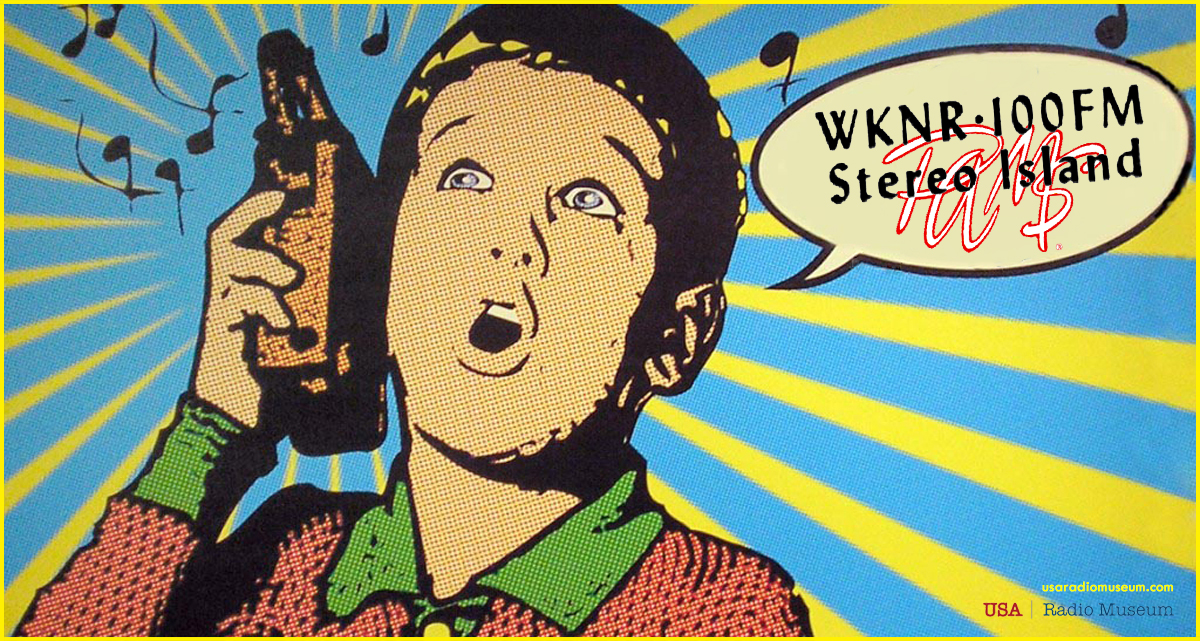From Top 40, Rock, to Relaxation: The Evolution of WKNR-FM to "Island's" Beautiful Music Haven In 1971, WKNR-FM shifted from its progressive rock f
From Top 40, Rock, to Relaxation: The Evolution of WKNR-FM to “Island’s” Beautiful Music Haven
In 1971, WKNR-FM shifted from its progressive rock format to “Stereo Island,” a blend of Beautiful Music and Middle of the Road styles, foreshadowing what would later be known as Soft Adult Contemporary. This transition proved successful, inspiring other stations, like WFMK in Lansing, Michigan.
 By early 1972, both WKNR and WKNR-FM were sold. On April 25, 1972, at 8:00 a.m., WKNR-FM bid farewell to the Stereo Island format, rebranding as WNIC and WNIC FM. They began simulcasting a straightforward Beautiful Music format, with the call letters “WNIC” chosen to reflect the station’s commitment to “NICe” music. This format was designed to create a laid-back, easy-listening experience, featuring soft rock, pop, and instrumental tracks. In 1976, WNIC embraced a more lively tone dubbed “Rock ‘n’ Easy,” eventually evolving into its current (and much successful) adult contemporary format, a status those same call letters still enbodies today. Here are several highlights of WKNR-FM:
By early 1972, both WKNR and WKNR-FM were sold. On April 25, 1972, at 8:00 a.m., WKNR-FM bid farewell to the Stereo Island format, rebranding as WNIC and WNIC FM. They began simulcasting a straightforward Beautiful Music format, with the call letters “WNIC” chosen to reflect the station’s commitment to “NICe” music. This format was designed to create a laid-back, easy-listening experience, featuring soft rock, pop, and instrumental tracks. In 1976, WNIC embraced a more lively tone dubbed “Rock ‘n’ Easy,” eventually evolving into its current (and much successful) adult contemporary format, a status those same call letters still enbodies today. Here are several highlights of WKNR-FM:
WKNR-FM and Its Evolution to “Stereo Island”
- WKNR-FM Album-Oriented Rock Era (1968): WKNR-FM embraced an album-oriented rock (AOR) format, featuring deejays Russ Gibb, a well-known figure in Detroit’s music scene and owner of the Grande Ballroom, Jerry Goodwin, Dan Carlysle, Jerry Taylor, Ed Busch and John Small. The station focused on progressive rock, playing longer tracks and showcasing emerging artists, aligning with the counterculture movement of the time.
- Competition with WABX and WXYZ-FM: WKNR-FM faced significant competition from WABX, a leader in free-form progressive rock, and WXYZ-FM (later WRIF), which adopted innovative rock-based formats. Struggles to compete led WKNR-FM to eventually abandon the AOR format.
- Shift to “Stereo Island” (1971): In 1971, WKNR-FM transitioned to a beautiful music format called “Stereo Island,” highlighting soft rock, pop, and instrumental music. This move was aimed at appealing to a more relaxed and diverse audience.
- Rebranding as WNIC-FM (1972): On April 25, 1972, WKNR-FM officially became WNIC-FM, adopting the tagline “Nice Music” and shifting to a soft adult contemporary format. This rebranding marked the conclusion of WKNR’s iconic era.
- Legacy of WKNR-FM and WNIC-FM: WKNR-FM’s AOR phase was a notable chapter in Detroit radio history. Its subsequent evolution to “Stereo Island” and later WNIC-FM highlights how stations adapted to changing listener preferences and industry’s competitive trends in the Motor City.
- Impact of Competitors: Stations like WABX and WRIF carved out strong identities and dominated the rock scene, overshadowing WKNR-FM’s efforts during its AOR period. Their success influenced Detroit’s diverse and competitive radio landscape. WABX, the iconic Detroit station known for its free-form progressive rock format, shifted away from this approach on March 3, 1975. On that date, the station adopted a more structured, formatted playlist under the direction of program directors Dennis Frawley and Jim Sotet. This marked the end of its free-form era, which had been a defining feature of the station since the late 1960s. WRIF is still rockin’ Detroit, today.
- WNIC’s Enduring Legacy: WNIC continues to thrive, playing contemporary hits and soft oldies. As of next month (April), it will mark 53 years since adopting the WNIC call letters, emphasizing its lasting impact on Detroit FM radio, still, to this day.
Stereo Island | WKNR FM 100.3 | 1970-1971
Audio Digitally Remastered by USA Radio Museum
The station’s jingles, created by PAMS, were a hallmark of this era and contributed to its unique identity. “Stereo Island” was part of WKNR-FM’s evolution as it transitioned from its earlier Pop Top 40 to Album Oriented Rock formats, down to a more relaxed and sophisticated sound. These aforementioned citations not only competed fiercely but also influenced each other, where each needed to be, all having contributed to Detroit’s reputation as a city with a rich and diverse radio history at the time.

